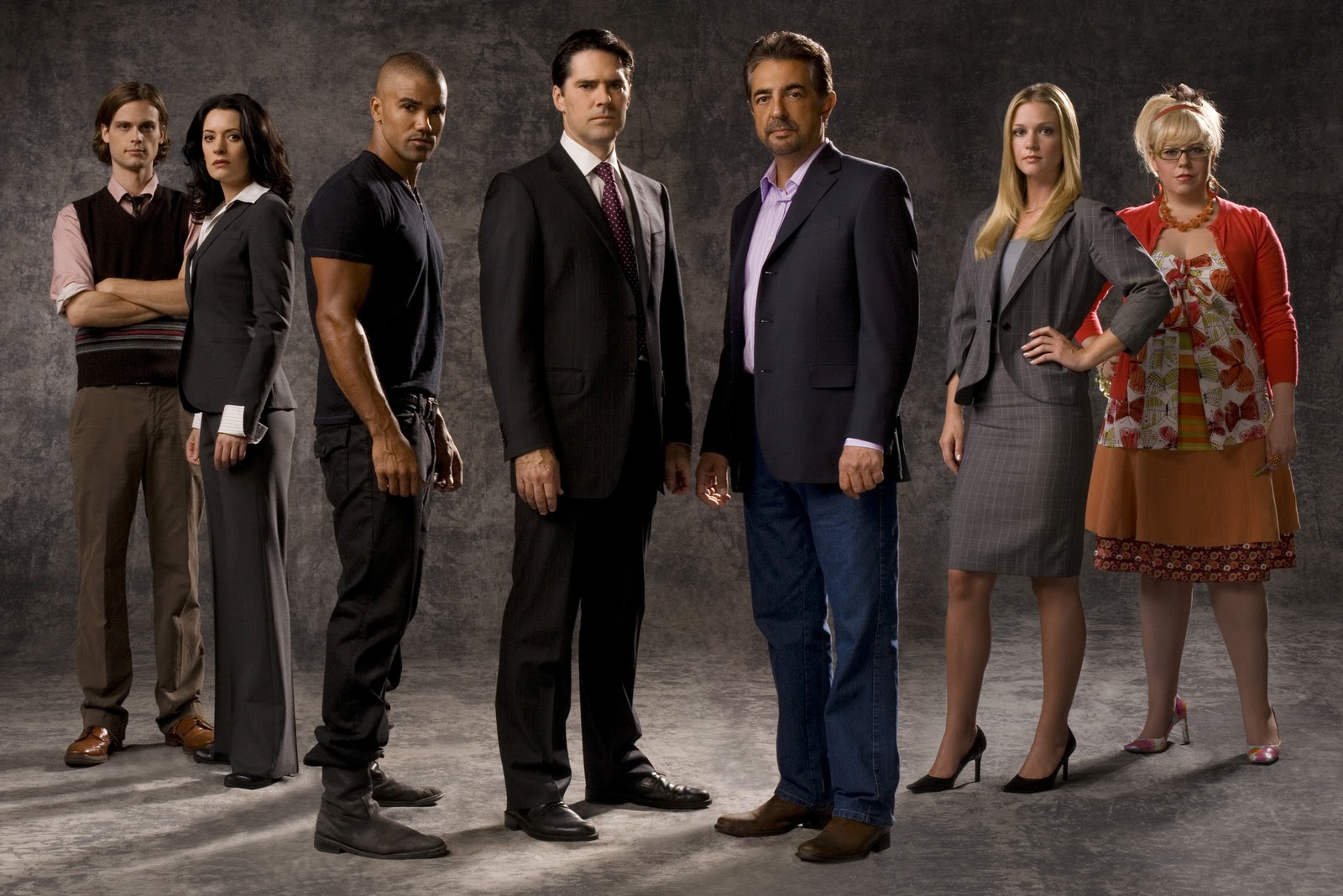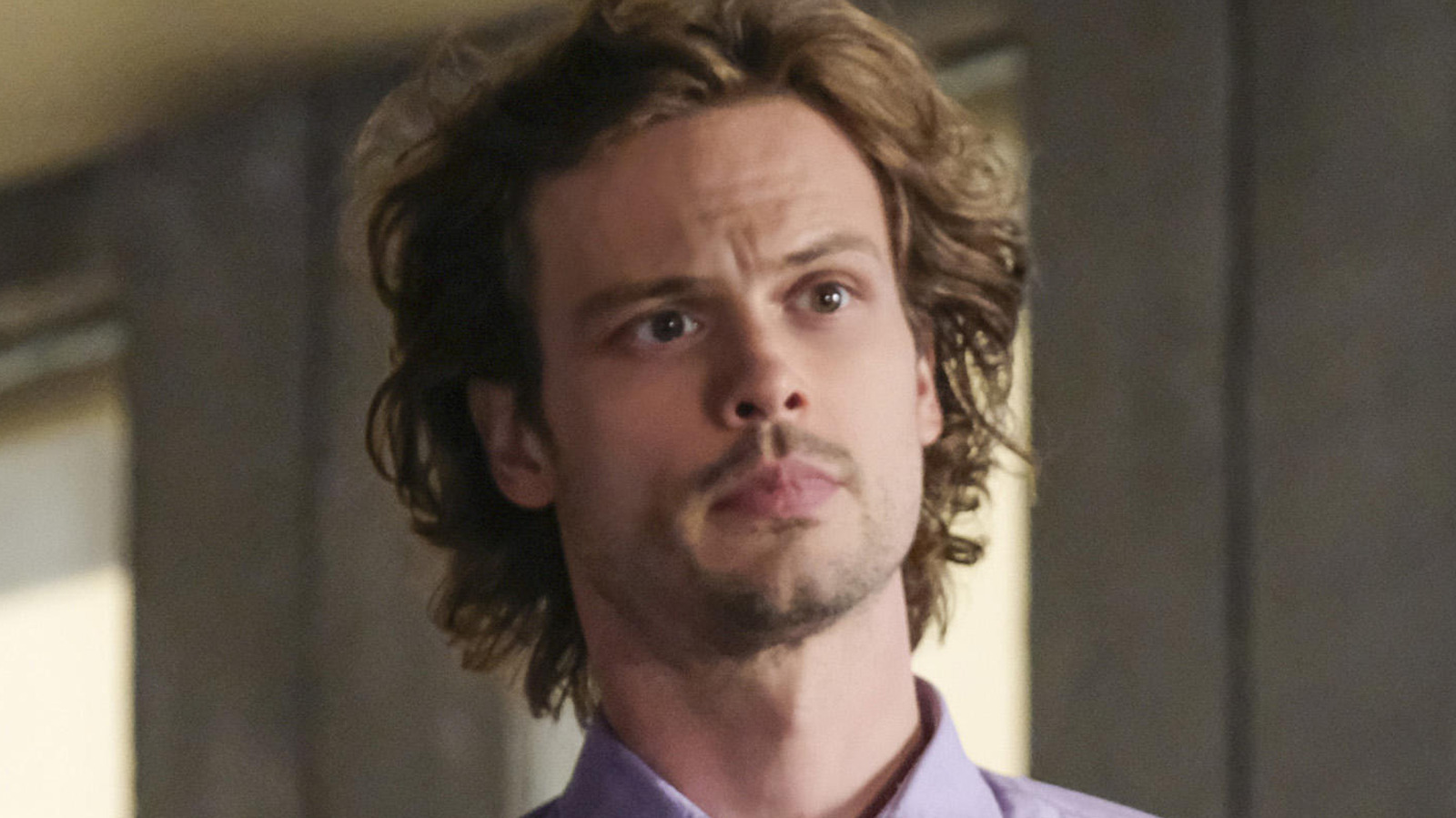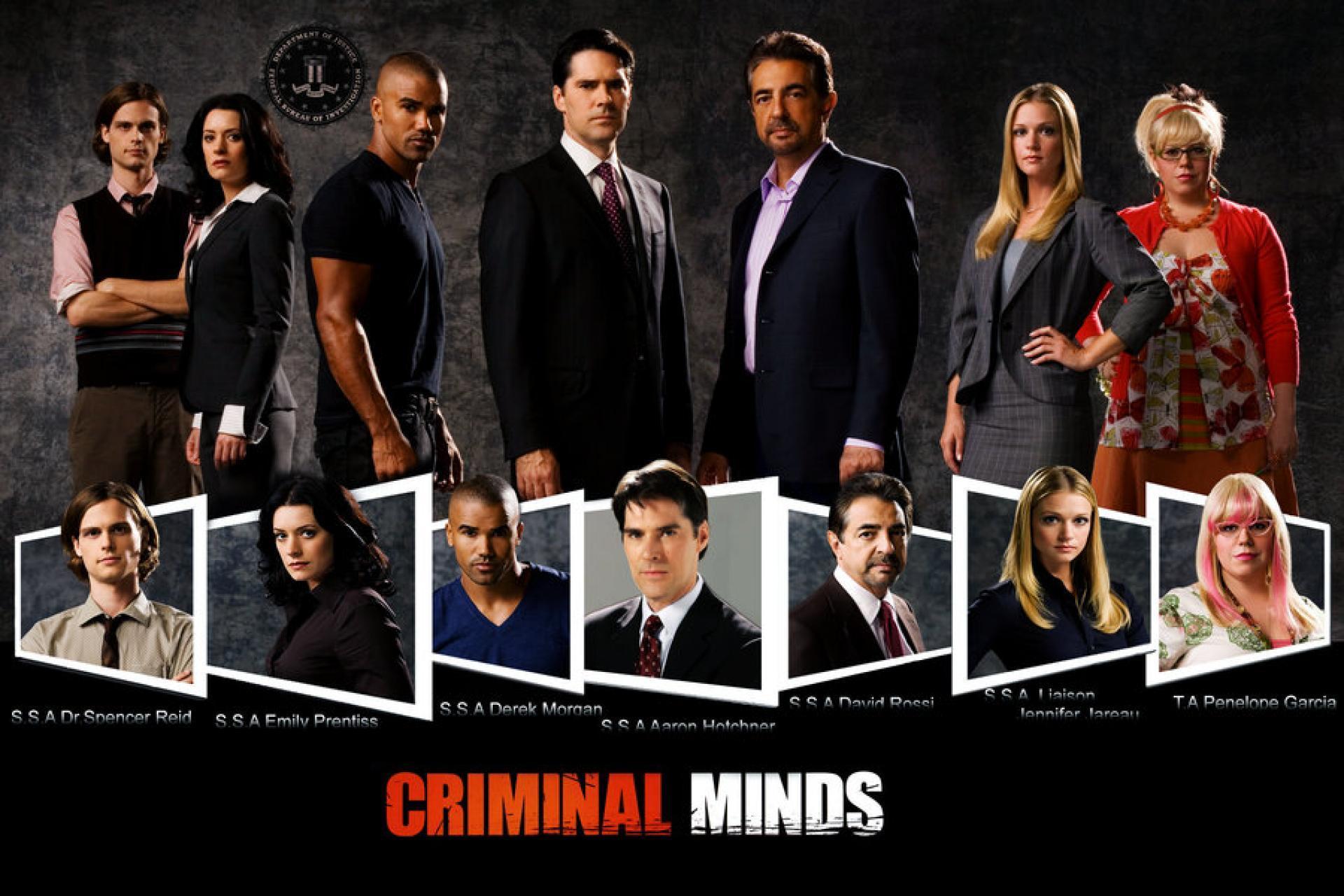Casting Criminal Minds: Finding The Perfect Fit For Behavioral Analysis
Have you ever wondered what goes into selecting the people who bring your favorite characters to life on screen? When it comes to a show like "Criminal Minds," a series known for its intense psychological drama and memorable characters, the process of casting criminal minds is a particularly fascinating one. It's not just about finding someone who looks the part; it involves a deep understanding of character, story, and how different personalities will interact on screen.
Picking the right actors for a show that runs for many seasons, with a dedicated fan base, calls for a very specific approach. Each member of the Behavioral Analysis Unit, or BAU, has a unique skill set and a distinct way of looking at the world. So, the folks behind the scenes needed to find individuals who could truly embody those traits, making the characters feel real and believable to viewers, you know?
This whole idea of picking the right person for a specific role, it shares some interesting ideas with other types of "casting" too. Think about it, in a technical sense, "casting" can mean changing one type of thing into another, making sure it fits just right. That same precision, that need for things to align perfectly, is very much a part of how the actors for "Criminal Minds" were chosen, as a matter of fact.
Table of Contents
- The Art of Selecting Actors for a Long-Running Series
- Fitting the Character: The "Casting" Concept
- Navigating the "Out of Range" Challenge
- Precision in Character Match
- The "Convert" Approach to Character
- Long-Term Character Development
- Frequently Asked Questions About Criminal Minds Casting
- Conclusion
The Art of Selecting Actors for a Long-Running Series
Creating a show like "Criminal Minds" means you need a team that feels like a family, but also like a highly skilled group of professionals. The people responsible for casting criminal minds had to consider more than just individual talent. They had to think about how each actor would play off the others, how their characters would grow, and how they would handle the often dark and intense stories.
It's not just about getting a good actor; it's about getting the *right* actor for a specific role. This is a subtle difference, but it really matters. For instance, the character of Dr. Spencer Reid needed someone who could convey immense intelligence and social awkwardness at the same time. That's a very particular combination, you know?
The show's longevity, stretching over many years and even coming back for a new chapter, shows how well the initial choices worked out. Viewers became very attached to these characters. That kind of connection doesn't just happen; it's built on strong performances from actors who truly understood their roles, as a matter of fact.
Fitting the Character: The "Casting" Concept
When you hear the word "cast," it might make you think of actors getting roles. But there's another way to think about "casting," a more precise, technical way. In some fields, "casting" is all about taking something of one type and changing it into another type. It's a process of making sure a value or an idea fits perfectly into a new mold, and that's a bit like what happens when you're casting criminal minds.
This technical idea of casting, where you change a type, is very common in certain structured systems. It's about ensuring compatibility, making sure one piece of information can be understood and used correctly in a different context. In a way, you could say casting an actor is a similar kind of type conversion, where you're trying to fit a person's abilities and essence into a character's requirements, almost like.
The real question in both situations, whether it's programming or picking an actor, is what happens if the original "value" – an actor's natural fit for a part, perhaps – is outside the "range" of what the new "type" – the character's demands – can represent. If an actor is a natural fit, if they are "in range," then assigning them the role is straightforward, just like assigning a value that fits. But what if they are not, you know?
Static and Dynamic Character Fits
You can think about actor selection a bit like different kinds of technical "casts." There's a concept called "static cast," which is used to change pointers to related types, like changing a general pointer to a very specific one. In actor selection, this might be like picking an actor whose established persona or previous roles already align very closely with the character's core traits. They are, in a way, already "typed" for the role, so to speak.
Then there's "dynamic_cast," which is used for converting pointers and references, especially when you need to check if a conversion is even possible at the moment it happens. This could be like selecting an actor who might not be an obvious choice at first glance. The casting team might need to see if the actor can truly transform, if they can adapt their skills and presence to truly embody the character in a way that isn't immediately apparent. It's a more flexible, perhaps more challenging, kind of fit, in some respects.
Both methods, in a technical sense, aim for a precise fit. But one is more about a direct, obvious match, while the other is about checking for a deeper, perhaps less obvious, compatibility that unfolds during the process. This mirrors how actors are chosen; some are a clear match, while others surprise everyone with their ability to become someone else, you know?
Navigating the "Out of Range" Challenge
A big challenge in casting criminal minds, or any show really, comes when an actor's natural way of being, their "value," is just "out of the range" that the character can represent. If a character is supposed to be quiet and reserved, but an actor naturally has a very loud and boisterous personality, that could be a tough fit. It's like trying to put a very large number into a very small container; it just won't work without losing something important.
The casting director's job is to see if an actor can stretch or if their core essence is just too far from what the role needs. If it's too far "out of range," then even a very talented actor might not be the right choice for that specific part. This is where the skill of the casting team really shines, in recognizing those boundaries, you know?
They have to ask themselves: Can this person convincingly portray the subtle nuances, the emotional depth, or the specific mannerisms that the character demands? If the answer is no, then it's a matter of finding someone else who naturally fits within that character's defined "range." This careful consideration helps ensure the audience believes in the characters they see on screen, basically.
Precision in Character Match
When you're trying to make sure a value is just right, sometimes you need to convert it to a very specific format, like casting something to a decimal with a certain number of places. It's about getting the exact right level of precision. Similarly, when casting criminal minds, the team needed to achieve a very specific "decimal" of character. They needed actors who could hit the exact notes for characters like Penelope Garcia, the quirky and brilliant technical analyst, or David Rossi, the seasoned and often gruff profiler.
Imagine trying to convert the number of rows in a table, multiplied by a decimal, to a floating-point number with two decimal places. It's about getting a precise, formatted result. Casting for "Criminal Minds" demanded that kind of precision. The actors needed to embody very specific personality traits, intellectual capabilities, and emotional responses. This meant finding people who could deliver those exact "decimal" points of character, so to speak.
This attention to detail helps create characters that feel fully formed and consistent, even across many seasons. It's not enough to be "close enough"; for a show that relies on character depth and team dynamics, the precision in casting truly makes a difference, very much.
The "Convert" Approach to Character
Sometimes, instead of a direct "cast," where you just force one type into another, it's suggested to "convert" with an optional parameter style. This helps avoid confusion and allows for more nuanced changes. For example, if you write to cast a date string, what would happen if the format was wrong? Using a "convert" function with a style parameter gives you more control and clarity.
This idea of "converting" rather than just "casting" can also be applied to how actors approach roles. Instead of just trying to "force" themselves into a character's mold, some actors "convert" their own abilities and understanding, adapting them with a specific "style" to fit the role. They might bring a unique interpretation that still honors the character's core, but adds a personal touch, you know?
This might involve an actor taking a character description and then "converting" it into a living, breathing person through their performance, perhaps adding subtle gestures or vocal patterns that weren't explicitly written. It's a more flexible and often richer way of embodying a role than just a straightforward "direct cast." This approach can lead to incredibly nuanced and beloved characters on screen, like your favorite ones from "Criminal Minds," arguably.
Long-Term Character Development
A show like "Criminal Minds" has a class of characters, and within that class, each character might have specific "enums" or categories, like their role (e.g., profiler, technical analyst) or their background. Just like a public enum might define specific roles or project funding types, each character on the show is defined by a set of core attributes and their function within the team.
The challenge for casting criminal minds over the long run is ensuring that these "enums" – these core character definitions – remain consistent, even as the actors and their portrayals evolve. The actors have to maintain the essence of their characters while also allowing them to grow and change with the story. It's a delicate balance, you know?
For example, if you write to cast a date, you expect a consistent date format. Similarly, viewers expect a consistent character, even if that character faces new challenges or develops new traits. The success of the "Criminal Minds" cast over so many years is a testament to how well they managed this balance, keeping their characters true to their original "type" while also letting them develop and surprise us, actually.
Frequently Asked Questions About Criminal Minds Casting
How were the main actors for Criminal Minds chosen?
The main actors for "Criminal Minds" were picked through a very careful process involving auditions and screen tests. The casting team looked for individuals who not only had the talent to portray complex characters but also had a chemistry with the other actors being considered. They really wanted to build a cohesive team that felt natural together, you know?
Did the cast of Criminal Minds change over time?
Yes, the cast of "Criminal Minds" did change a bit over its many seasons. Some actors left for various reasons, and new characters were brought in to fill their spots. This meant the casting team had to keep finding people who could seamlessly integrate into the established team dynamic, which is a pretty big task, in a way.
What makes a good fit for a Criminal Minds character?
A good fit for a "Criminal Minds" character usually means an actor who can show both the intellectual side of profiling and the emotional impact of dealing with difficult cases. They need to be able to convey intelligence, empathy, and sometimes a bit of personal struggle. It's about finding someone who can truly embody the many layers of these roles, frankly.
Conclusion
The process of casting criminal minds is a truly complex and thoughtful endeavor. It involves more than just picking a familiar face; it's about finding the right individuals who can embody characters with depth, intelligence, and emotional resonance. Just like the precise definitions and conversions in technical "casting," selecting the actors for this beloved show required an incredible eye for detail and an understanding of how each piece would fit into the larger picture.
The lasting impact of "Criminal Minds" and its characters speaks volumes about the talent involved, both in front of and behind the camera. It shows how important it is to get those character "types" just right, ensuring they can stand the test of time and connect with millions of viewers. You can learn more about the show's history and cast members at TV Guide's Criminal Minds page. What are your thoughts on the casting choices for the show? Which character's portrayal do you think was the most spot-on, and why? Share your ideas, pretty much.

Criminal Minds fans

The Real Reason This Criminal Minds Casting Director Was Fired

Criminal Minds Wallpaper - WallpaperSafari